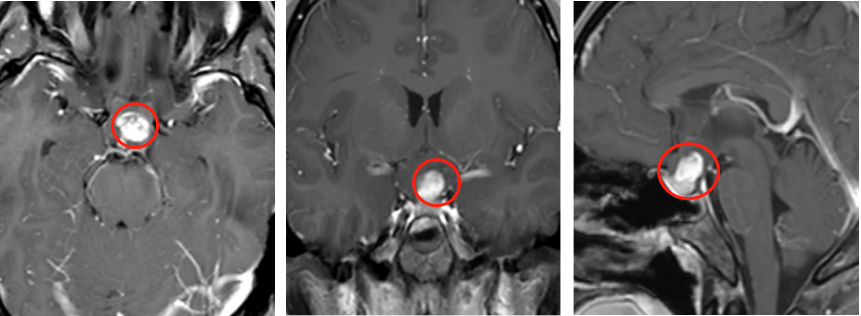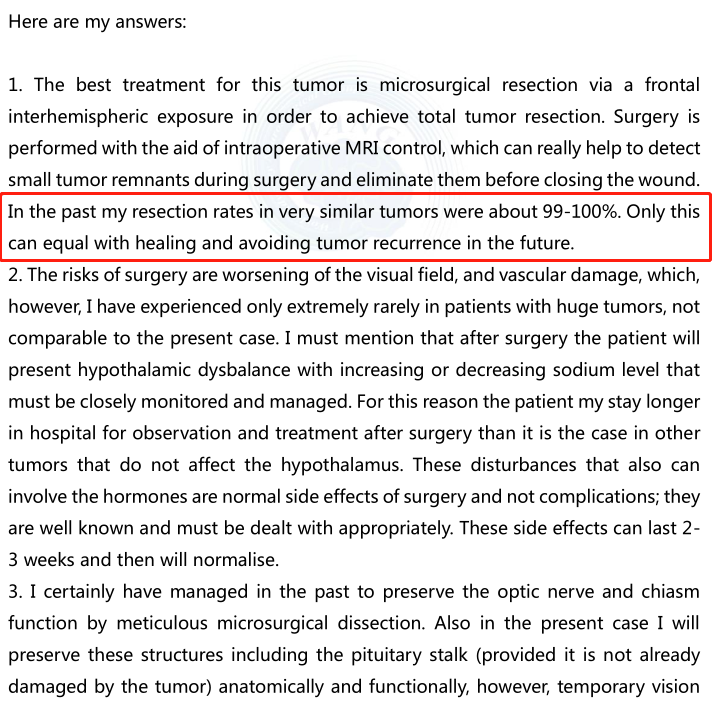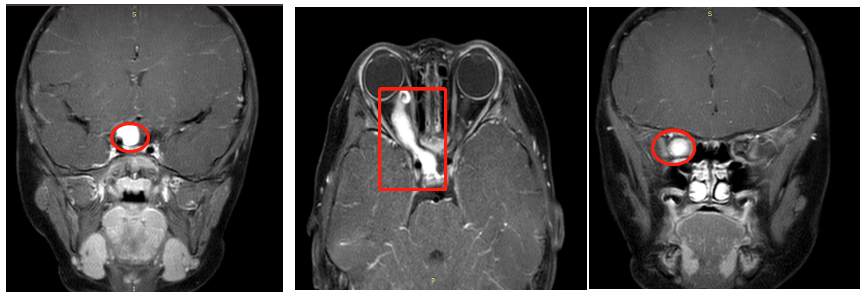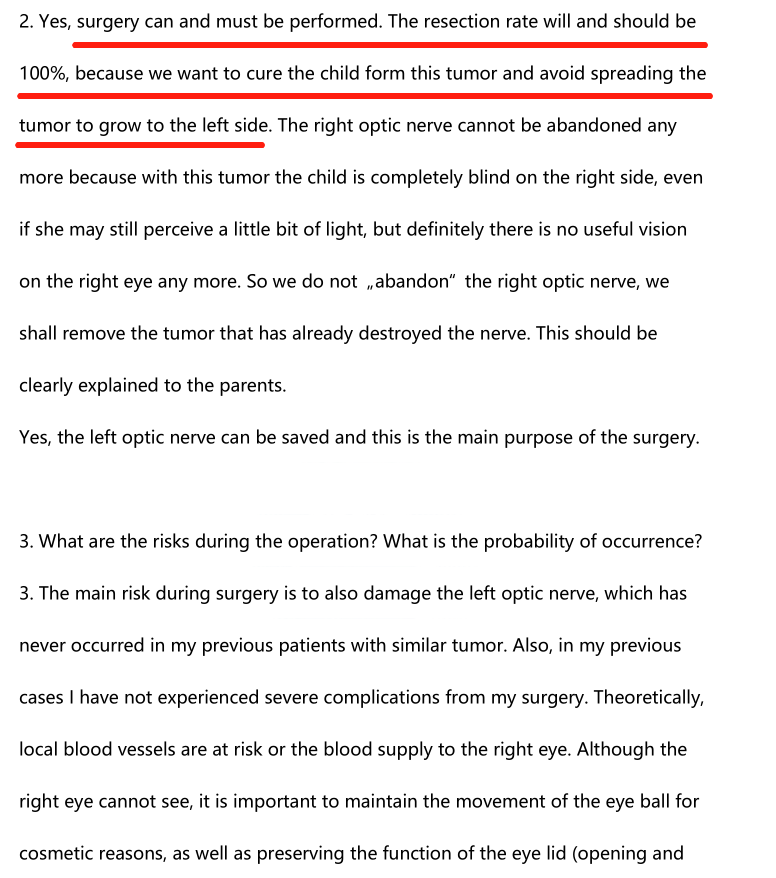How does optic nerve glioma preserve vision?
- Normal Liver Cells Found to Promote Cancer Metastasis to the Liver
- Nearly 80% Complete Remission: Breakthrough in ADC Anti-Tumor Treatment
- Vaccination Against Common Diseases May Prevent Dementia!
- New Alzheimer’s Disease (AD) Diagnosis and Staging Criteria
- Breakthrough in Alzheimer’s Disease: New Nasal Spray Halts Cognitive Decline by Targeting Toxic Protein
- Can the Tap Water at the Paris Olympics be Drunk Directly?
How does optic nerve glioma preserve vision?
How does optic nerve glioma preserve vision? Can hearing be preserved after optic glioma surgery?
“When a glioma involves the optic nerve, vision is precarious, is there still a possibility of surgery? Can vision be restored?” Optic nerve glioma is a low-grade astrocyte that originates from the optic nerve, optic chiasm, optic tract, or hypothalamus Massive tumors can severely image the patient’s vision and endocrine function.
As long as this kind of low-grade glioma is completely resected, the patient generally has a good prognosis, and long-term survival is not a problem. However, the difficulty of treatment is that the tumor is very close to the optic nerve, and the operation is difficult to complete. Patients with slight damage are in danger of permanent loss of vision. How to safely perform total surgery and preserve the patient’s optic nerve function to a great extent is a major challenge in the field of neurosurgery in the world.
01. Blurred vision examination is optic glioma, how can it be treated better?
Mr. Lin, a 25-year-old office worker, had blurred vision in his left eye and hemianopia on the temporal side of his right eye for 2 weeks. The head MRI showed “sellar area occupying”. After general anesthesia underwent transnasal sellar area occupying resection, tumors were seen during the operation. It is located in the optic chiasm and optic nerve. The optic nerve may be damaged due to surgery, and there is a risk of blindness, so it is only partially removed. The local doctor recommended conservative radiotherapy and chemotherapy. Later pathological results suggested low-grade pilocytic astrocytoma.
Mr. Lin consulted Professor Ba through INC remotely on the current most suitable treatment method, whether it can be operated on, surgical resection rate, optic nerve preservation probability, etc. In response, Professor Ba gave the following general reply:
1. Regarding treatment methods and surgical resection rate: The leading treatment method for this type of tumor is microsurgical resection through exposure between the frontal hemispheres to achieve total tumor resection. Surgery requires the help of intraoperative nuclear magnetic equipment, which can really help to find the residual small tumors during the operation and remove them before suturing the wound. In the past, my removal rate for very similar tumors was about 99% or more. Only in this way can it be equivalent to curing and avoiding future tumor recurrence.
2. Regarding the preservation rate of the optic nerve during the operation: In previous experience, I will protect the optic nerve and optic chiasm function through meticulous microsurgical planing. In this case, I will also retain these structures, including the pituitary stalk (provided that the pituitary stalk has not been destroyed by the tumor). In the long run, vision is likely to improve gradually.
3. Regarding postoperative treatment and the probability of recurrence: After the operation is as complete as possible, only hormone replacement and other drugs are needed after the operation. There are more in the early stage, and the later period depends on the hormone situation and electrolyte (sodium, potassium) balance. There is a high probability that radiotherapy and chemotherapy are not required. This low-grade glioma has a risk of recurrence of only 5% in the next 5-10 years.

Finally, Professor Ba particularly pointed out that if there is no operation, the tumor will continue to grow and the patient’s condition will deteriorate. He has treated many such patients because the operation was too late. Eventually the tumor became huge and endocrine and vision problems appeared, and even caused double blindness. Therefore, it is not recommended that patients wait to avoid these defects due to delayed treatment.
02. The right eye of a 3-year-old child is blind, can the vision in the left eye be preserved?
A 3-year-old child with strabismus was found when he was 2 years old. A recent fundus examination showed that the optic disc of the right eye was light, and the head enhanced NMR showed: abnormal signals in the upper saddle pool and right eye frame. Orbital MRI showed that the right optic nerve was obviously thickened and tortuous throughout the whole process, showing equal T1 long T2 signal shadow, and obvious enhancement after enhancement. The intracranial lesions were close to the end of the internal carotid artery, and the pituitary stem was compressed and shifted to the left. Consider optic glioma. He has not undergone surgery, radiotherapy or chemotherapy, and may have no vision in his right eye. Other normal.

The parents of the children consulted Professor Ba for related surgical questions, and Professor Ba’s reply was extremely detailed. The following is his reply to some key questions:
1. About the final diagnosis of the child: The child is a typical “optical glioma”. Although it is the same tumor, there are two parts, one is in the orbit along the entire right optic nerve, and the other part is in the skull. Midline, the position of the optic chiasm. At the level of the optic chiasm, the tumor can grow further to the left and endanger the left optic nerve. You must try to avoid the continued growth of the tumor, otherwise the child will be completely blind in the future.
2. Regarding the possibility of surgery and the resection rate: the child can be operated and must be operated on. The operation can achieve total resection. We hope to cure this tumor and avoid spreading to the left side.
3. Regarding the restoration of the original vision and the preservation of the existing vision: the right eye of the child is blind, even if he can feel a little light, but the right eye has no usable vision. In this case, it is not to consider giving up the right optic nerve, but The tumor that has destroyed the nerve should be removed to save the left optic nerve. This is the main purpose of surgery. The preservation rate of the left optic nerve is 99.5%, but this is not easy, because on the one hand, the tumor must be completely removed to preserve the left optic nerve, and on the other hand, the left optic nerve cannot be endangered. So this is a precise operation that requires a lot of experience, which I have accumulated over the past 25 years.

For other treatments after surgery, Professor Ba pointed out that usually, pediatric oncologists tend to treat such tumors with chemotherapy regimens, however, these regimens are not enough to avoid tumor progression. If the tumor can be cut completely, then no additional treatment is needed after the operation.
The above two cases of optic glioma patients suffer from surgical difficulties and their vision cannot be saved. However, the high resection rate and high safety recommendations of Professor INC. Bart Langfei undoubtedly renewed their determination to actively treat and greater hope for the future. .
03. The second operation is basically full cut, no recurrence in 2 years, vision improvement
INC once treated a 5-year-old child with optic glioma, and he was also facing such a dangerous situation. Although he had undergone an operation in China, in order to pursue a complete operation and preserve the child’s vision, he received Professor Ba’s After active remote consultation, the family decided to fly a long distance to Germany for surgery. At the INI International Neurology Institute in Germany, after a joint operation by Professor Bart Langfei and Professor Di Rocco, the child’s optic glioma was resected ≥98%, from preoperative invasion to bilateral frontal lobes and three ventricles There is no tumor on the postoperative image. From almost blind to gradually returning to normal vision, his surgical effect can be said to be a textbook-level example.
(source:internet, reference only)
Disclaimer of medicaltrend.org



